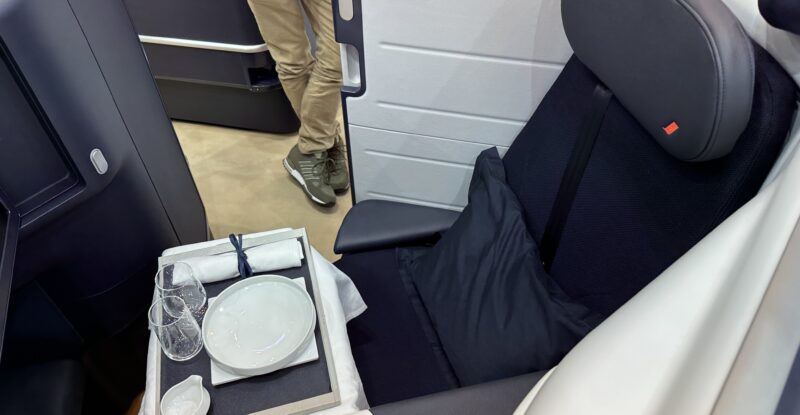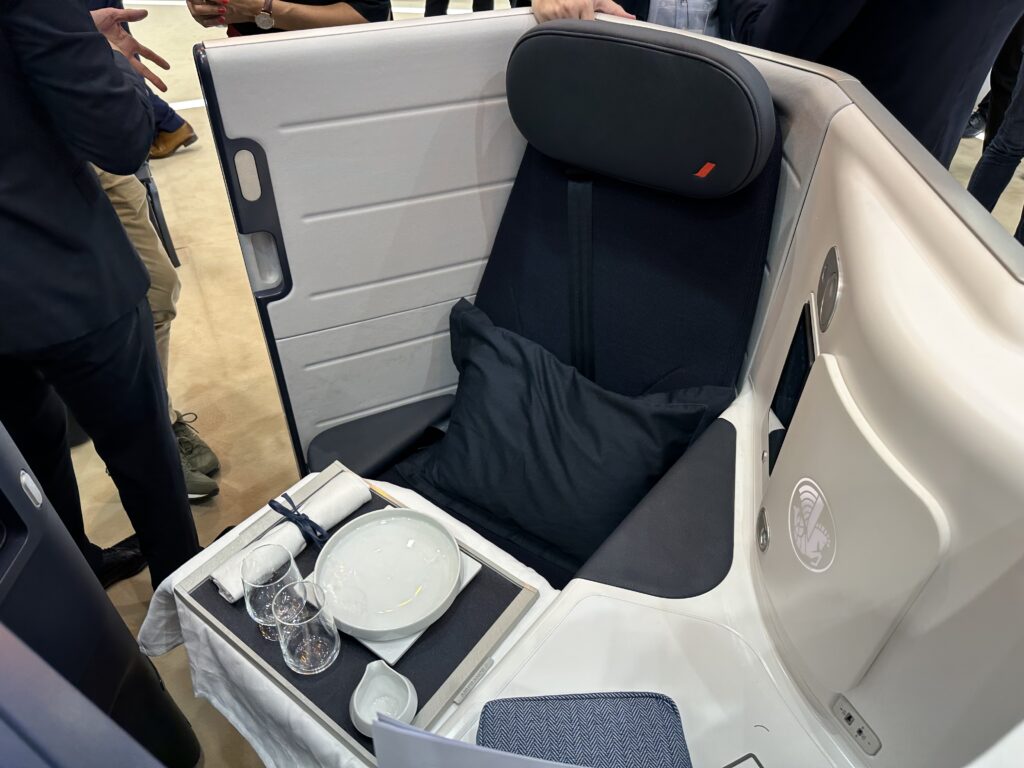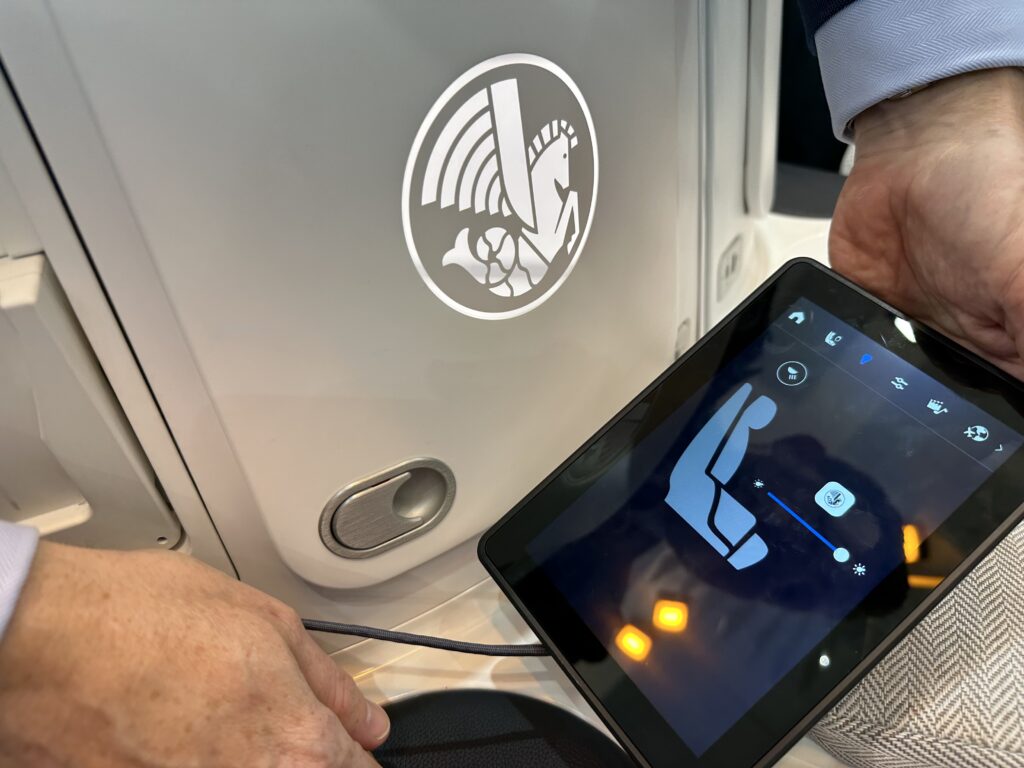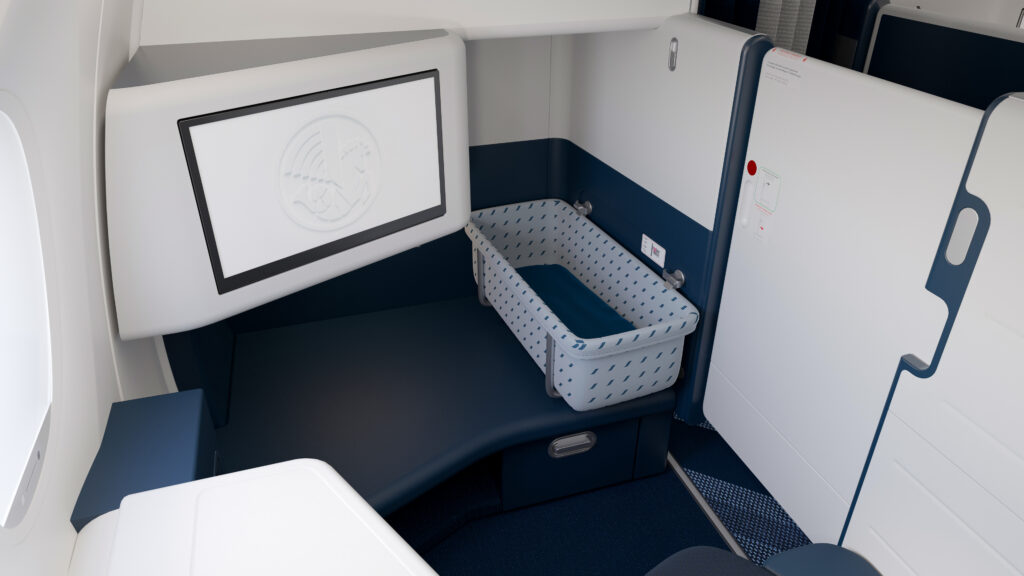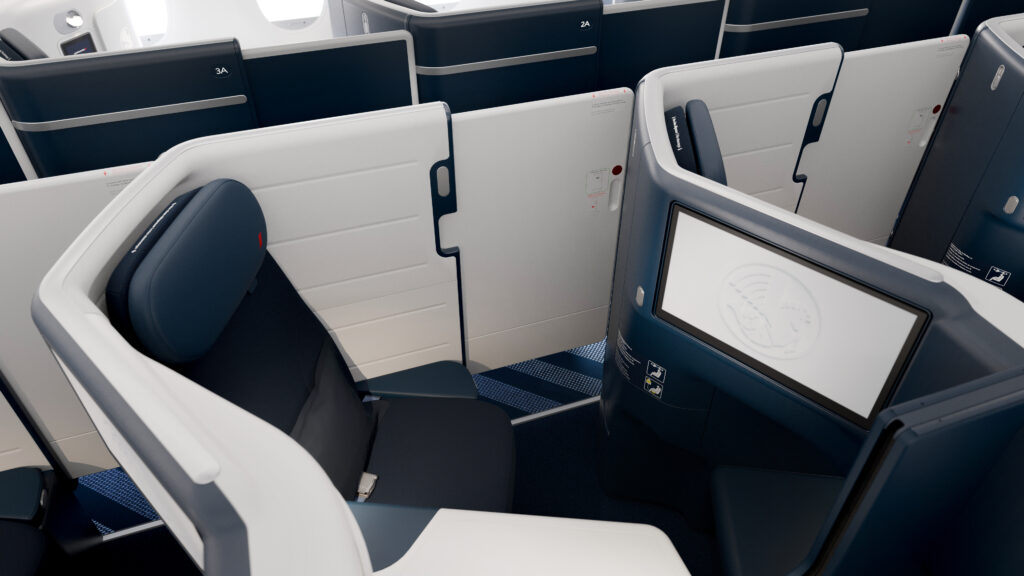HAMBURG — Airbus subsidiary seatmaker Stelia, in a new version of its outward-facing herringbone Opera, is making a play for the widebody herringbone market — including on the Boeing 787.
Unveiling launch customer Air France’s version for its forthcoming Airbus A350 fleet — and winning out in a selection over Safran’s incumbent Air France longhaul Cirrus seat less than a year old — Stelia also highlighted two forthcoming Boeing 787 programmes for the new seat in addition to a trio of narrowbody versions.
The widebody Opera is an updated, modern outward-facing herringbone doored mini-suite, differing primarily from its competition in the layout of the screen (which folds into the shell of the seat in front rather than being static).
Compared with Air France’s previous seat, it is a rather more successful implementation of the blue-white-silver-grey colour palette than the Cirrus version. The overall aesthetic, with lighter colours above and darker colours below, leans more into the greys and silvers than the expanses of white in Cirrus, which are also broken up with bands of silver and more depth of structure, exemplified by the amenity storage cupboard door, which sits proud of its surroundings when closed rather than retracting flush.
Here, too, are small touches and moments of whimsy for which Stelia is becoming renowned, like the pop of red in the thoughtfully conceived storage band for eyeglasses inside the compartment and the new dimmable “crevette” seahorse accent light, which is controlled by the touchscreen tablet next to the seat.
The front row of the first of the two cabins segments — featuring a total of 48 seats — will offer a business-plus front-row product, which will be more along the lines of a slight upgrade to the normal seat in terms of footwell space, and will not be marketed as a first class replacement: this is not, Air France tells Runway Girl Network, a mini-La Première first class.
The front row of the second cabin, meanwhile, will offer a larger flat surface in the footwell area plus a bassinet crib attachment for passengers travelling with infants.
Outboard seats in the rest of the cabin offer the benefit of a footwell that opens directly to the sidewall of the aircraft, adding crucial inches to the sense of space at foot level. Indeed, RGN’s journalists — including our tallest, clocking in at a tall 6’4”/1.93m — found the outboard seat spacious in bed mode, even with the smaller footwell compared with the front row.
Our one criticism of the seat is the door mechanism: like Safran’s, this is a heavy, substantial door that slides forwards on a spring. Of the three models on the Safran stand, two of the doors fetched up against the end of their travel mechanism with enough of a heavy clunk to shake the rest of the seat, similar to Safran’s. While these stand versions are not full production models, they comprise enough production parts that we’ll be keeping an eye out for on-wing experiences.
Air France says in its press release that the seat was “designed exclusively for Air France”, but this is true only for the final trim and finish look, with Stelia executives confirming to RGN that there are two linefit Boeing 787 programmes currently in the pipeline for widebody Opera, in addition to three narrowbody Opera A321neo programmes.
In the business class competition stakes, widebody Opera beat out the Safran Cirrus outward-facing herringbone for the Air France A350, launched less than a year ago, seen on the airline’s refitted 777 aircraft. This is a notable win for Stelia: one would ordinarily imagine that the parts commonality of an A350 and 777 version of the same seat would give a substantial advantage to the incumbent.
However, this win does not stem from dissatisfaction with Safran, Air France’s senior vice president for customer experience Fabien Pelous tells RGN, explaining that “it is the principle of the market: we make a tender with a project, and the best one wins — quality, price.”
Air France is content with the current production quality of its Safran Cirrus seats, despite some concerns with early shipsets, but which Pelous characterised to RGN as “the normal life of a new design”.
Overall, for a seat designed for the narrowbody niche and unveiled only this week in its widebody form, Opera has gone from an optimised single-aisle specialist to a serious general contender in the business class seat game.
Related Articles:
- Air France new seats: more arrière-garde than avant-garde
- Stelia seat brand remains within new Airbus Atlantic operation
- A private Rendez-Vous with Stelia poses luxury business class questions
- Stelia learns design lessons from previous herringbone generations
- Inside Stelia’s plans for certifying its Opera narrowbody seat
- Stelia sings 44°-angle tune with single-aisle Opera suite
Featured image credited to John Walton


